Grantr
Hazard to Self
 
Posts: 57
Registered: 19-9-2015
Member Is Offline
Mood: No Mood
|
|
Melt casting ETN experiments
Melt cast ETN is powerful and much easier to make than having to press powder. I know this makes the stuff more sensitive when it is liquid. My
method can be nearly risk free.
My method is to bring water near boiling on the stove and pour this into a plastic container and set this outside. Powdered ETN is pressed into a mold
and the mold it either floated or clamped to the container to hold it in the hot water. This step is fast so the heat transfer time is long enough to
get away from the container.
The ETN will melt after 5 to 10 mins and if left long enough the water will cool back down. My theory is if the stuff does not fume or blow up in the
1st 10 mins it probably will not so I feel reasonable comfortable carefully handling it in liquid from. For safety, a pulley system to raise and lower
the ETN in and out of the water would be best unless you wait for the water to cool.
I used half of a plastic egg shell to make a 3 gram cast. The egg would just float. I waited 10 mins and then took the egg out of the water and let
the liquid ETN cool.
I used a thin wall stainless steel cap with a wood stick zip tied to it. I cast 3 grams in this. The stick is clamped to the container side holding
the cap in the water deep enough to heat the ETN. I had planned to use this cap as a reusable mold however I found that ETN is super sticky.
I used another stick and stuck it in the ETN power so it would serve as a way to pull the cast plug out of the mold. I pulled as hard as i could and
it would not bulge. Even a few hammer whacks did not loosen the cast ETN. Just kidding about the hammer!
I also made a floating mold out of two aluminum drink cans and cast 4 grams in the bottom of a concave part of the can. I was sure this could be
resued. ETN stuck to this like glue so that did not work as a reusable mold.
Aluminum foil works well however shaping the foil into a round cylinder seems to always make holes in it which leak water into the ETN. I made a 2
gram charge this way and even with the water intrusion, the cast formed and worked fine.
The biggest issue is finding a reusable mold. A thin wall flexible plastic container would seem best. Thin wall is needed for max heat transfer.
|
|
|
Bert
Super Administrator
        
Posts: 2821
Registered: 12-3-2004
Member Is Offline
Mood: " I think we are all going to die. I think that love is an illusion. We are flawed, my darling".
|
|
Mold release compound, if you want to extract the casts from the mold. Could be as simple as lightly wiping a female mold with a suitable oil or
grease. What would be most suitable and safe/compatible, I have no clue. It was easier to just cast the EM into an appropriate container/around a
desired SC cone or cavity in my experience.
A long time ago, I did similar experiments with lightly pressing 600mg ETN into Copper cap bodies (6mm OD x 1.25" long), then pouring just below
boiling water around the loaded capsules secured upright in a small plastic container (35mm film can). It worked, and there were no issues in several
dozen trials at producing the base charge loaded cap, 40mg of lightly pressed Lead azo clathrate ignited by 1/4" fuse or electric match did the job
every time, 25mg was borderline for the cast ETN. No attempt was made to STORE these, however.
I would be interested to here a FIRST HAND account from anyone who HAS had an accident or other issue while intentionally melting and casting ETN.
Yamato reported doing something entirely different-
https://www.sciencemadness.org/whisper/viewthread.php?tid=22...
The guy in Alaska who posted youtube videos where he claimed to make and fire multiple Kg range cast ETN charges is no longer communicating (possibly
he DID have an issue?).
I will not revisit the technique myself, except possibly to try a drop hammer & friction test on molten material with a heated apparatus. Too many
other substances and forming techniques that have been shown to be reasonably safe and effective-
Rapopart’s Rules for critical commentary:
1. Attempt to re-express your target’s position so clearly, vividly and fairly that your target says: “Thanks, I wish I’d thought of putting it
that way.”
2. List any points of agreement (especially if they are not matters of general or widespread agreement).
3. Mention anything you have learned from your target.
4. Only then are you permitted to say so much as a word of rebuttal or criticism.
Anatol Rapoport was a Russian-born American mathematical psychologist (1911-2007).
|
|
|
Praxichys
International Hazard
    
Posts: 1063
Registered: 31-7-2013
Location: Detroit, Michigan, USA
Member Is Offline
Mood: Coprecipitated
|
|
I too can vouch for this being an effective method for forming dense ETN charges, particularly into caps.
I strongly advise against using aluminum as a vessel when handling liquid ETN. Keep in mind that it is actually a fairly reactive
metal underneath that thin oxide layer. Many people on the forums have independently discovered that ETN can be made to detonate by thermal shock in
the presence of aluminum.
I have a system similar to what Bert describes for making good caps, except my vessels are made of glass and are thus inert. I use these 1ml glass perfume sample vials from eBay. They have a nice flat bottom and can be clamped into a vessel of hot water as described above. I
fill them about 3/4 the way up with ETN which comes to about a gram. The cap is soft plastic and is easily drilled with a 1/8" bit, which also removes
the built-in applicator wand. A fuse is pushed with friction through the hole, and the conveniently concave cap is filled with hot-melt glue to seal
the fuse in place. 50-100mg of SA/DS or lead azide is then poured onto the solid ETN. A small piece of cotton wool is wrapped around the fuse which
has been trimmed to the level of the solid ETN. The cotton takes up the extra room on top of the primary and keeps it in place. The top of the vial is
installed to complete the cap.
They make excellent, high performance caps that are very reliable, easy and relatively safe to make, waterproof, have inert housings for use in
corrosive environments, and produce no noticeable dangerous fragmentation. The housings cost $0.14 each and are also available in 0.7 and 1.5 ml sizes
for various initiation requirements.
In the spring I will be working on an all-ETN electrical-discharge type NPED cap which consists of the usual cast ETN at the bottom, followed by
low-density powdered ETN at the top with a pair of electrodes through the plastic cap to do the initiating.
A further embodiment of this type of cap is to clip the plastic applicator tip so that some is still sicking down beyond the lid. A turn or two of
nichrome or similar wire can be wound around the plastic stalk and attach to two electrodes forced through the plastic at the top, making an
electric-match type detonator.
|
|
|
NeonPulse
Hazard to Others
  
Posts: 417
Registered: 29-6-2013
Location: The other end of the internet.
Member Is Offline
Mood: Isolated from Reality! For Real this time....
|
|
I too would be interested in hearing about first hand accounts about incidents with molten ETN, you read about it kind of like an urban legend of
sorts, but of course that's not saying it is totally risk less, but I have never heard anything from anyone who has had an accident other than Aqua
regia who foolishly put a flame to a test tube containing ETN residues.
|
|
|
Grantr
Hazard to Self
 
Posts: 57
Registered: 19-9-2015
Member Is Offline
Mood: No Mood
|
|
Bert,
I thought about using Vaseline as a mold lube however I think the heat would liquidfiy the Vaseline and possibly foul the casting. I may try it to see
for sure. You said you will not be casting again. It's this due to the risk off melting the ETN or are you unsure off the stability off the final
cast product?
Praxichys,
I have had very poor luck being able to get ETN to go high order from shock heating it in aluminum foil. What I thought were detonations were just
deflagerations. I had two confirmed dets out of many tries.
I tried the ETN pressed and loose in the foil. The foil packs were placed on cotton balls soaked in Colman fuel. I even had one have molten ETN run
out and solidify in the bottom of a drink can.
As far as spark gap NPED goes, I have my setup working flawless. It is powered by two aa batteries so it's compact. I plan to share soon.
Neon,
I think shock heat is what causes the issue. Water bath prevents this. Of course this is an opinion and not a fact. Hands off casting is the ideal
method. The mold can be easily lowered and raised remotely using a block and tackle to remove all risk.
|
|
|
Bert
Super Administrator
        
Posts: 2821
Registered: 12-3-2004
Member Is Offline
Mood: " I think we are all going to die. I think that love is an illusion. We are flawed, my darling".
|
|
I am just too old to believe in being immortal anymore. Other methods work well, and are better characterized.
I have seldom seen ETN NOT go high order from a GRADUAL, INDIRECT heating in an Aluminum capsule- It may run out and burn off, but if a properly
constructed and well sealed Aluminum capsule is placed in a small metal dish formed from expendable sheet metal, with a moderate burner flame playing
on it from below, the end result is usually a gratifying explosion and a hole blown through the supporting metal.
Heating rate matters for obtaining a cook off- Kind of like the classic experiment of dropping NG on different areas of a heated steel plate. Do it
where it's too hot, it flashes and puffs. Do it where it's too cool, nada. Someplace in between, you find a temperature range where the drop goes
BLAM!
Please do not hold the container of NG in your other hand while performing this demonstration- Or you, too, may learn short hand writing.
Rapopart’s Rules for critical commentary:
1. Attempt to re-express your target’s position so clearly, vividly and fairly that your target says: “Thanks, I wish I’d thought of putting it
that way.”
2. List any points of agreement (especially if they are not matters of general or widespread agreement).
3. Mention anything you have learned from your target.
4. Only then are you permitted to say so much as a word of rebuttal or criticism.
Anatol Rapoport was a Russian-born American mathematical psychologist (1911-2007).
|
|
|
Grantr
Hazard to Self
 
Posts: 57
Registered: 19-9-2015
Member Is Offline
Mood: No Mood
|
|
It is truly amazing what extremely small amounts of ETN can do. I tested a 1 inch peice of drinking straw full of loose ETN. I set the straw in the
mouth of a coke can. The can looks like a peeled banana. Yea short hand would be in order.
|
|
|
Laboratory of Liptakov
International Hazard
    
Posts: 1333
Registered: 2-9-2014
Location: Technion Haifa
Member Is Offline
Mood: cool.gif
|
|
Heated ETN
Heated ETN (ammount 0,01g) on aluminium foil thick 0,05 mm (classic for eat) or 0,10 ( grill foil eat) with using lighter time of 5 - 10 second = full
detonation on 80%, and deflagration na 20%. Tried 10x. Plugs in ear, but bare hands. 14 days micro chips Al foil under the skin of inch. Thats my
experience :-)
Liptakov
|
|
|
Grantr
Hazard to Self
 
Posts: 57
Registered: 19-9-2015
Member Is Offline
Mood: No Mood
|
|
Ouch! I will not stick a lighter to any amount.
|
|
|
Turner
Hazard to Others
  
Posts: 197
Registered: 2-12-2013
Member Is Offline
Mood: No Mood
|
|
My experience with cast ETN:
I pressed 60 grams of powdered, twice recrystallized ETN into a cylindrical plastic container about 2-3 inches in diameter I secured a detonator
casing in the center of the pressed material and placed this in some water. I turned the water heat on and left. I came back about an hour later (yes
stupid) and the water was boiling, I just turned heat off and left for another hour came back and it was solid. Very nice and dense material at the
bottom. I had to break the plastic to have just the cast material. This is what it looked like:
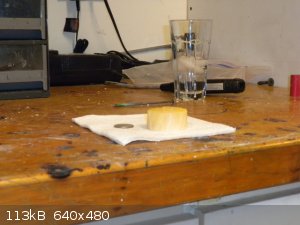
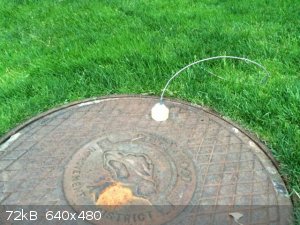
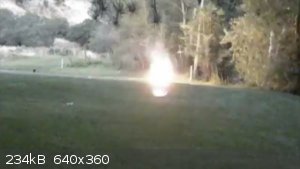
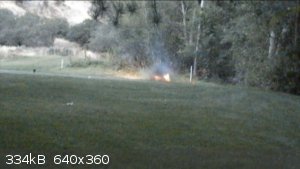
|
|
|
Detonationology
Hazard to Others
  
Posts: 362
Registered: 5-5-2015
Location: Deep South
Member Is Offline
Mood: Electrophillic
|
|
This is not doing any improvement towards the "Improvement District" you live in: detonating HE in city limits and scaring all the neighborhood cats
and dogs  Great job nonetheless and nice pics. Great job nonetheless and nice pics.
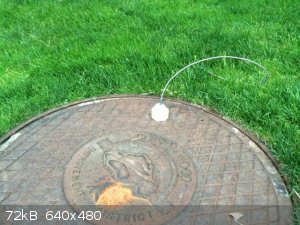
“There are no differences but differences of degree between different degrees of difference and no difference.” ― William James
|
|
|
Microtek
National Hazard
   
Posts: 827
Registered: 23-9-2002
Member Is Offline
Mood: No Mood
|
|
Did you happen to take a picture of that manhole cover afterwards?
|
|
|
TGT
Harmless

Posts: 46
Registered: 9-11-2014
Member Is Offline
Mood: No Mood
|
|
That is a little too much in city limits I would say. Be careful, you could get in a lot of trouble. I too would like to see the man hole cover, but
its probably untouched since this was not a shaped charge. If so there would be a hole straight through that man hole cover, easily.
TGT
|
|
|
Metacelsus
International Hazard
    
Posts: 2531
Registered: 26-12-2012
Location: Boston, MA
Member Is Offline
Mood: Double, double, toil and trouble
|
|
Using manhole covers as witness plates is not a good idea. The authorities may ignore you if you test explosives in private, but damaging public
property is an unnecessary provocation. Also, you can't really keep the manhole cover afterwards for further analysis.
|
|
|
Turner
Hazard to Others
  
Posts: 197
Registered: 2-12-2013
Member Is Offline
Mood: No Mood
|
|
For those curious/interestedt:
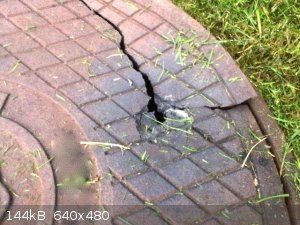
I was not expecting the metal to fracture as it did. I guess it is a more brittle metal.
Compare to 20g of rubberized RDX on the same plate leaving just a slight indent (not as dense as the ETN though):
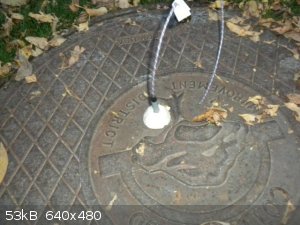
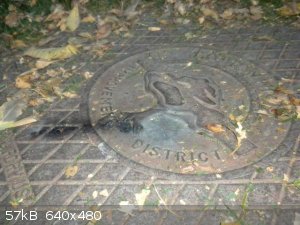
[Edited on 16-12-2015 by Turner]
|
|
|
nitro-genes
International Hazard
    
Posts: 1048
Registered: 5-4-2005
Member Is Offline
|
|
How interesting the effects of HE's on metal may be, posting photos of destruction of government property really shouldn’t be allowed on SMDB. Hope
you got the coverplate from some scrapyard, you can find all the stuff to test on there anyway. Since these guys deal in bulk metals, usually they let
you take some plates/billets for free anyway, since they don't want the hassle of these small transactions...
|
|
|
Bert
Super Administrator
        
Posts: 2821
Registered: 12-3-2004
Member Is Offline
Mood: " I think we are all going to die. I think that love is an illusion. We are flawed, my darling".
|
|
I think those pictures were posted here before, with the same reaction re: pissing off the local government.
Try asking at a welding shop or steel supplier for any scraps of AR (Abrasion Resistant) steel they don't need, the stuff they use to build up or
replace cutting edges and sides of buckets and blades on loaders, bulldozers, excavators. About the toughest steel commonly available around here.
Cast Iron is just plain brittle, you can break a manhole cover like that by dropping it on a rock! If you can cut or blast a hole in AR, you
definitely have a high VOD and good power.
Rapopart’s Rules for critical commentary:
1. Attempt to re-express your target’s position so clearly, vividly and fairly that your target says: “Thanks, I wish I’d thought of putting it
that way.”
2. List any points of agreement (especially if they are not matters of general or widespread agreement).
3. Mention anything you have learned from your target.
4. Only then are you permitted to say so much as a word of rebuttal or criticism.
Anatol Rapoport was a Russian-born American mathematical psychologist (1911-2007).
|
|
|
KesterDraconis
Hazard to Self
 
Posts: 78
Registered: 27-3-2015
Member Is Offline
Mood: No Mood
|
|
^Very true about the ease of breaking a manhole cover. Its actually an annoyance of mine with our local government, since I've seen more than a few
manhole covers near my house that are terribly cracked or down right broken, yet nobody is fixing them!
Definitely not something that is very useful for a witness plate. At the same time, I don't know about using scraps. As much as we aren't trying to be
super precise in our home chemistry, I think the different shapes and compositions of different steel would effect how the explosive performance
looks. In that case I suppose it would be best to simply obtain the scraps you can, and be careful about how you place the charge and the thickness of
the steel. (like how on this manhole cover there is rather deep engravings, therefore, depending on where you place it, wouldn't the effect be
somewhat different?)
Perhaps I worry too much though.
|
|
|
Brightthermite
Hazard to Others
  
Posts: 127
Registered: 26-6-2019
Member Is Offline
|
|
Melt-Cast not performing as expected
Below is an image of 2.5 grams of ETN melt-cast into a 3ml glass perfume vial. This gives the cast the diameter of around 8mm. I have failed 3 times
now to punch through this 3mm steal plate. Ive heard of people punching through similar steal with similar charge size. Example is the 900mg melt cast
cap Wesson Jr. has a video knocking a hole in 2.5mm steal. Any ideas whats going on?
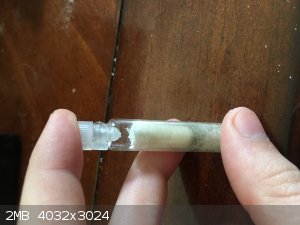
|
|
|
Pyro_cat
Hazard to Others
  
Posts: 243
Registered: 30-4-2018
Member Is Offline
Mood: No Mood
|
|
Quote: Originally posted by Bert  | I am just too old to believe in being immortal anymore. Other methods work well, and are better characterized.
I have seldom seen ETN NOT go high order from a GRADUAL, INDIRECT heating in an Aluminum capsule- It may run out and burn off, but if a properly
constructed and well sealed Aluminum capsule is placed in a small metal dish formed from expendable sheet metal, with a moderate burner flame playing
on it from below, the end result is usually a gratifying explosion and a hole blown through the supporting metal.
Heating rate matters for obtaining a cook off- Kind of like the classic experiment of dropping NG on different areas of a heated steel plate. Do it
where it's too hot, it flashes and puffs. Do it where it's too cool, nada. Someplace in between, you find a temperature range where the drop goes
BLAM!
Please do not hold the container of NG in your other hand while performing this demonstration- Or you, too, may learn short hand writing.
|
Thats very interesting.
Experimented with ETN very little. Learned a good hammer hit set it off.
Trying to light little bits it evaporated or just burned.
But touching little bits with the heated end of a flat head screwdriver like you said with dropping NG on different areas of a heated steel plate that
screwdriver tip had to be in the right heat range or the ETN wouldn't pop.
I learned this by accident. I just wanted to melt some little bits on the anvil with the screwdriver to then hit with the hammer on the anvil and see
if the melted stuff reacted different. In the process of doing this set it off with the hot screwdriver.
Experimented some more and yep to hot or to cold it wouldn't work.
[Edited on 12-7-2020 by Pyro_cat]
|
|
|
Brightthermite
Hazard to Others
  
Posts: 127
Registered: 26-6-2019
Member Is Offline
|
|
Thought I would post this visual example of how much density effects explosive performance. The hole on the left was 5 grams cast ETN, the plug above
it was found about 3 inches in the ground. The hole on the right was 10 grams pressed ETN, I did not measure its density but it was pressed enough to
be handled without falling apart. Amazing how half the amount of explosive can be so much more powerful when at full density.
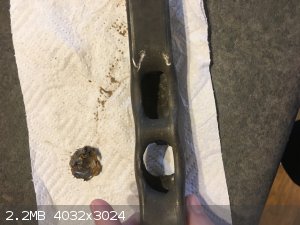 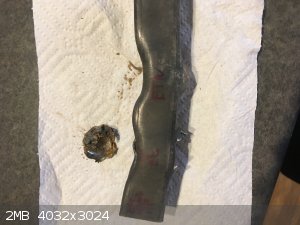
|
|
|
Petn1933
Hazard to Others
  
Posts: 106
Registered: 16-9-2019
Member Is Offline
|
|
Quote: Originally posted by Brightthermite  | | Thought I would post this visual example of how much density effects explosive performance. The hole on the left was 5 grams cast ETN, the plug above
it was found about 3 inches in the ground. The hole on the right was 10 grams pressed ETN, I did not measure its density but it was pressed enough to
be handled without falling apart. Amazing how half the amount of explosive can be so much more powerful when at full density. |
interesting comparison. thank you
|
|
|
Petn1933
Hazard to Others
  
Posts: 106
Registered: 16-9-2019
Member Is Offline
|
|
Quote: Originally posted by Brightthermite  | | Thought I would post this visual example of how much density effects explosive performance. The hole on the left was 5 grams cast ETN, the plug above
it was found about 3 inches in the ground. The hole on the right was 10 grams pressed ETN, I did not measure its density but it was pressed enough to
be handled without falling apart. Amazing how half the amount of explosive can be so much more powerful when at full density. |
interesting comparison. thank you
|
|
|